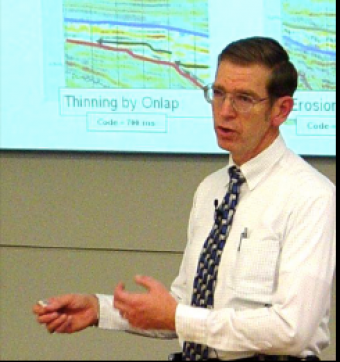This lesson is divided into three (3) segments. The lesson should start with a ~5 minute review of the previous exercise (Introduction to Play Elements). The review should be followed by the lecture material which contains eighteen (18) slides, and take ~35 minutes to cover. Finish the class time with an introduction to Exercise 3, which contains twelve (12) slides and should take ~10 minutes to cover.
This lesson examines the various tools used throughout the petroleum industry that help determine the production potential of a particular basin. In addition, students will learn that data collected can vary with scale, from regional to compartmental analysis.
The exercise examines the fictional Bonanza Basin, and the eight (8) blocks that are up for bid within that region. There is a well located just outside the blocks up for bid that encountered a good reservoir and source rock. Unfortunately, that particular well was dry and the source interval immature - therefore, no hydrocarbon (HC) generation. Armed with maps based on the well data and a grid of 2D seismic data, the students will have to decide which blocks merit further investigation, which show little HC potential, and which ones fall in between the spectrum.
At the end of the lecture, the student should be able to:

This course, based on teaching material from Dr. Fred Schroeder (formerly of Exxon/ExxonMobil), reflects on the geology and geophysics basics for the petroleum industry. General geology and basic geophysics are not required, but helpful with the material.